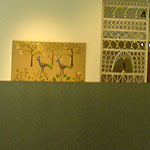Euroacademia Conferences
 Europe Inside-Out: Europe and Europeanness Exposed to Plural Observers (9th Edition) April 24 - 25, 2020
Europe Inside-Out: Europe and Europeanness Exposed to Plural Observers (9th Edition) April 24 - 25, 2020 Identities and Identifications: Politicized Uses of Collective Identities (9th Edition) June 12 - 13, 2020
Identities and Identifications: Politicized Uses of Collective Identities (9th Edition) June 12 - 13, 2020 8th Forum of Critical Studies: Asking Big Questions Again January 24 - 25, 2020
8th Forum of Critical Studies: Asking Big Questions Again January 24 - 25, 2020 Re-Inventing Eastern Europe (7th Edition) December 13 - 14, 2019
Re-Inventing Eastern Europe (7th Edition) December 13 - 14, 2019 The European Union and the Politicization of Europe (8th Edition) October 25 - 26, 2019
The European Union and the Politicization of Europe (8th Edition) October 25 - 26, 2019 Identities and Identifications: Politicized Uses of Collective Identities (8th Edition) June 28 - 29, 2019
Identities and Identifications: Politicized Uses of Collective Identities (8th Edition) June 28 - 29, 2019 The European Union and the Politicization of Europe (7th Edition) January 25 - 26, 2019
The European Union and the Politicization of Europe (7th Edition) January 25 - 26, 2019 7th Forum of Critical Studies: Asking Big Questions Again November 23 - 24, 2018
7th Forum of Critical Studies: Asking Big Questions Again November 23 - 24, 2018 Europe Inside-Out: Europe and Europeanness Exposed to Plural Observers (8th Edition) September 28 - 30, 2018
Europe Inside-Out: Europe and Europeanness Exposed to Plural Observers (8th Edition) September 28 - 30, 2018 Identities and Identifications: Politicized Uses of Collective Identities (7th Edition) June 14 - 15, 2018
Identities and Identifications: Politicized Uses of Collective Identities (7th Edition) June 14 - 15, 2018
(Re)Constructing Identities: Post-Soviet Art of the Baltic Countries at Venice Biennale 1999
-
-

-
Presentation speakers
- Vinogradova Ekaterina, Grenoble Alpes University and Ilya Repin St. Petersburg State Academic Institute for Painting, Sculpture and Architecture
Abstract:
My paper addresses the importance of a relatively new discourse within our discipline – the history of exhibitions – and its role in the post-Soviet context of the regional art history of the Baltic States. I am proposing a case study on the first participation all of the Baltic countries in 1999 Venice Biennial. An analysis of reflections of a recent past and formations of post-1990s subjectivities in the art of former Soviet republics. The cross-disciplinary festival presented for the first time together the independent art of three Baltic countries Estonia, Lithuania and Latvia. The heritors of the Eastern European ‘cultural underground’, the dissident movement and unofficial culture(s). The visual arts being represented by three national exhibitions (Stories, Storytellers, Latvian, Ando Keskküla, Jüri Ojaver, Peeter Pere : Palazzo Querini, Estonian and Mindaugas Navakas, Eglė Rakauskaitė Lithuanian national representations) for the dAPERTuttO (Apperto over all) main venue, curated by Harald Szeeman. My comparative study will consider also other ‘post-soviet art’ exhibitions of the 48th edition of Biennial and give an overview of the political, diplomatic and cultural conditions the Venice project was created in. Individual positions of the professionals involved as well as rather emotional personal memoirs are of crucial importance as well. The exhibition design and location speak the language of the utopian and activist cultural politics of the time and should be considered as important. I would argue the need of an open-minded and cross-disciplinary study in order understand the process of (re)construction identity on export. I would shortly reconstruct the events of the Biennale exhibition of 1999 as well as its parallel official and unofficial canons as its background.
-
Related Presentations


















